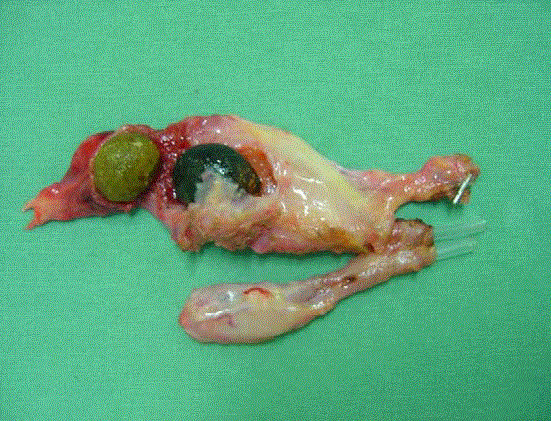Clinical Image
Gallbladder Duplication
Silvio Marcio Pegoraro Balzan*, Vinicius Grando Gava, Alice Zanella and Guilherme Reghelin
Goulart
Department of Surgery, Hospital Moinhos de Vento, Porto Alegre and Universidade de Santa Cruz do Sul, Santa
Cruz do Sul, Brazil
*Corresponding author:
Published: 03 Aug, 2017
Cite this article as:
Clinical Image
A 40-year-old female presented with intermittent epigastric pain for 6 months. The abdominal
ultrasonography (US) showed cholelithiasis and a thin gallbladder septum. Laparoscopic
cholecystectomy was performed and during the procedure two biliary structures communicating
the gallbladder with the common hepatic duct were found. Additional subserosal dissection
revealed the presence of two attached gallbladders, each one with its cystic duct. Cystic ducts were
clipped, divided, and the gallbladders were resected. Stones were present in one of them, which was
associated with chronic cholecystitis. The postoperative course was uneventful.
Gallbladder duplication (GD) is a rare malformation (1/4,000 births) probably originated due
to exuberant budding of the developing biliary tree [1]. Double gallbladders can be Y-shaped type
(only one cystic duct entering the common bile duct) or ductular type (individual cystic ducts entering the common bile duct). Despite no symptoms are imputed to this malformation, the
incidence of gallbladder diseases is similar to patients with single gallbladder (Figure 1). Preoperative
or intraoperative recognition of a GD could prevent excessive hilar dissection and common bile
duct injury. Both gallbladders should be removed when a cholecystectomy is planned, to avoid
symptomatic gallstones in the remaining organ.

